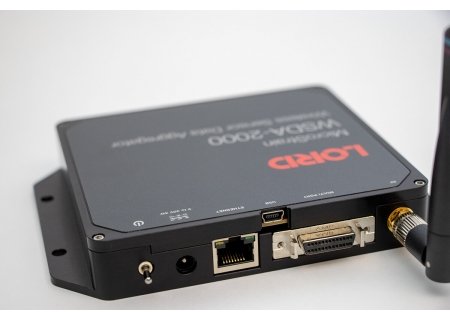Description
The WSDA®-2000 is a network-ready gateway for reliable data acquisition from Parker wireless and inertial sensors. The WSDA-2000 features Ethernet, USB 2.0, and J1939 CAN interfaces, as well as 4GB of on-board memory for datalogging.
Ethernet connectivity means access to your wireless sensor network from anywhere in the world. This gateway automatically pushes data to SensorCloud, where data is securely stored, viewed, and may have analytics operations or alerts set up. The WSDA-2000 also allows a remote connection so the owner can control their sensor network as if they are on-site.
The WSDA®-2000 supports LORD Sensing’s latest LXRS+ wireless communication protocol and all LXRS- enabled modes, providing high-speed sampling, ±50 microseconds node-to-node synchronization and lossless data throughput under most operating conditions.
LORD Sensing Wireless Sensor Networks enable simultaneous, high-speed sensing and data aggregation from scalable sensor networks. Our wireless sensing systems are ideal for test and measurement, remote monitoring, system performance analysis, and embedded applications.
The gateways are the heart of the LORD Sensing wireless sensing system. They coordinate and maintain wireless transmissions across a network of distributed wireless sensor nodes.





